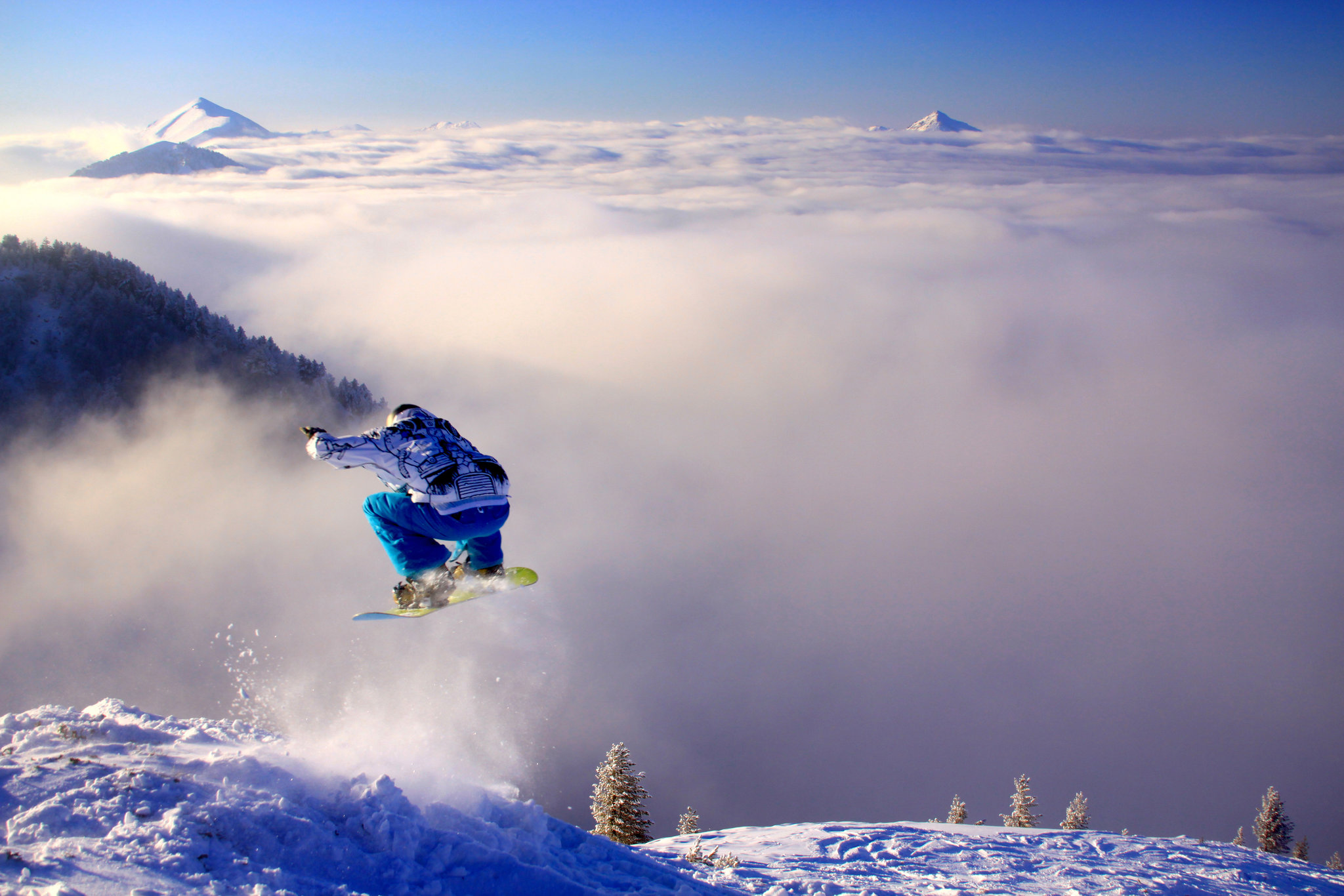
Brezovica is known for its steep slopes and deep powder. But once the investments stopped, the storied resort was all but dead. Credit” Benny Islami for The New York Time
Things are about to change for the sport in Europe’s newest country as developers plan to rebuild and vastly expand the industry there.
By Tim Neville / The New York Times
The flakes stumbled into the windows, gathered themselves and then wobbled on like revelers caught between pubs. At times it snowed so hard I could hardly see anything out there at all. A wood hut. A concrete wall. When the storm finally broke three days later, some 40 inches of snow had fallen and everything sprang to life.
The timing was ideal. A few hours earlier, I had arrived in Pristina, the red-roofed capital of Kosovo, just as the first flakes corkscrewed their way to earth. It was February, frigid, and a worsted wool blanket stretched across the Balkan sky. I threw my skis into the back of a 4Runner with two Serbs I had hired to pick me up, and we rode south in silence toward the Sharr Mountains along the Macedonian border. In an hour we’d be at Brezovica, the most delightfully dysfunctional ski resort in Europe.
You’ve probably heard of Kosovo but not of skiing in Kosovo. Landlocked between Albania and Serbia, Kosovo was the last of the nations to congeal in the caldron of old Yugoslavia. For years it remained a largely autonomous province tucked in southwestern Serbia, but a full-blown war for independence erupted there in 1998 between Orthodox Serbs and ethnic Albanians, who are Muslims. The fighting grew so ugly with a Serb-sponsored campaign of ethnic cleansing that NATO eventually intervened on the Albanians’ behalf in 1999. Today, to the United States and the 110 other countries that recognize it, Kosovo stands as Europe’s newest country, an eight-year-old diamond of roughly two million friendly, westward-looking people still struggling to get on their feet. An abandoned stone mansion called Stojko’s house, one of the few buildings that will remain after redevelopment. Credit: Igor Nikolcevic
But before all of that there was skiing, and Yugoslavia had plenty of it, from Kranjska Gora in the north to Papova Shapka in the south. The sport soared in popularity when the Olympics came to Bosnia in 1984 and a Slovenian, Jure Franko, won silver in the giant slalom to clinch Yugoslavia’s first Winter Olympic medal ever. Brezovica, about 250 miles southeast of Sarajevo, served as a backup for those games, but Yugoslavia’s more hard-bitten skiers already knew the place for offering the steepest slopes and deepest powder for the fewest dinars.
There near the Serbian enclave of Strpce about 35 miles south of Pristina, storms slam into the 8,000-foot Sharr Mountains that rocket out of the Metohija basin with abrupt ridges and mighty shoulders cupping some of the continent’s most extensive pasturelands. Back in the ’80s, the resort’s hey-decade, 10 lifts, including five surface tows, serviced nine named runs, though the real magic happened in the go-anywhere terrain of the open north-facing bowls. D.J.s from Belgrade and Skopje kept the parties going until dawn. In the morning you might awake to find so much snow had fallen that even the wild chamois were stuck. Brezovica survived the wars but not the peace that followed. Throughout the early 2000s, INEX, the Serbian socially owned enterprise that managed the resort, stopped investing in Brezovica and everything began to crumble. One of the main hotels, a graceless rectangular prism, became a drafty concrete husk. The disco floor went cold. One by one the lifts failed, and by 2013 none of them worked. The storied resort was all but dead.
Then last April, a French consortium signed a contract with Kosovo’s Trade and Industry Ministry to bring Brezovica back to life; the plan was so ambitious that many locals weren’t sure if it was true. A group of some of the world’s biggest leisure resort development firms — MDP Consulting, the engineering firm Egis and the Compagnie des Alpes, the world’s largest ski area management company behind French ski resorts like Val d’Isère, Tignes and Méribel — agreed to invest half a billion dollars, about 410 million euros, over the next 17 years to make Brezovica one of the largest, if not the largest, mountain resorts in the Balkans. According to Jill Jamieson, a consultant who has worked on the finance package, that is the single largest private investment in the country since the war, if not ever.
The scope of the proposal is mind-boggling. The consortium has until May to put the financing in order, meaning work could begin this summer. When complete, the resort, at 8,000 acres, will be the size of one and a half Vails, nearly all of which is skiable and inside a national park. It will have the vertical drop of a Crested Butte, about 2,600 feet. The number of hotel beds will grow from 700 to 7,000 — three times as many currently available across the entire country. Visitors will have 100 miles of slopes, high-speed lifts and three gondola-linked villages. Two international airports, Pristina and Skopje, are no more than a 90-minute drive. One day Brezovica might even provide a more budget-friendly alternative to skiing in the Alps.
Skeptics abound, of course. Can the next greatest place to ski in Europe really be in a tiny war-weary country so obscure it’s hard to imagine anyone vacationing there at all? Is a mega-resort the most sustainable way to attract tourists? Will they even find enough snow on a warming planet? Never mind Kosovo’s rampant corruption and politics that are so cantankerous that politicians themselves have lobbed tear gas canisters in their own chambers at least six times in the last few months to disrupt their own proceedings. And yet there is hope.
“If we can do this, we can do anything,” said Manik Begolli, an Albanian Kosovar who worked on a public-private partnership team contracted by the United States Agency for International Development to help find an investor.
Maybe. For the moment, though, I just hoped I could ski.
Seven-Elevens have bigger parking lots than Brezovica’s but that’s where the Serbs dropped me off just after dark as the storm gathered intensity. Igor Nikolcevic met me there in a camouflage snowboard jacket. He was 42, a Serb with closely cropped hair and soulful eyes. He grabbed my ski bag and led me up an icy path to a pizzeria that he started with his wife, Draginja, and which he named after his daughter, Tina. Tina now lives in Pristina. I could have her room, fuzzy kitten posters and all.
I followed Igor into the heart of the village, a collection of mostly hand-built cottages run by hangers-on who have eked out a living by offering basic services to the few who make it this far. There was the Cafe Braca and Restaurant Ljuboten. Skis lined the racks in a shop called Dane. The main chairlift out of the village, an ancient double chair, stood eerily quiet, the seats glazed in ice.
That was actually an improvement over the last time I was here, in 2013, when INEX was hundreds of thousands of euros behind on its power bill and the utility company had cut electricity to the lifts. All was not lost. Instead, for €7 — about $9 at the time — the Dane guys would give you a ride to the top in a snow-grooming machine, where an entire resort’s worth of untracked powder tugged at my tips.
It was some of the best skiing I’d ever had for less than a nickel a turn: an unlimited supply of deep, creamy snow on a steep, consistent fall line. Others just hiked up a small rise with sleds or sipped brandy outside while music pumped from competing loudspeakers. I loved the vibe and vowed to return.
This time, two years later, there was at least the possibility that the lifts might run. Sometime in 2014, as the French were quietly studying the resort’s prospects, a cadre of groups, including the Kosovo Electricity Corporation, local officials and the minister of trade and industry, hashed out a deal to get two of the chairlifts spinning again. The equipment was still old, maybe even from the 1970s, and too unsafe to operate in a blizzard. I would have to wait for fairer skies to ride them.
Igor pushed open a door and the pizzeria sighed a breath of warm air. Christmas lights hung from the log cabin frame and spilled a molten glow on the snow outside. Snowshoes, wooden skis and photographs of wintry scenes from the resort’s early days decorated the walls. A fire crackled in the wood stove. A pizzeria in Kosovo is one of the coziest places I know.
I took a seat at a long wooden table next to a local with an even longer face. His house two doors down had just succumbed to a chimney fire. With no firefighters to navigate the winding, snowy road up from Strpce in time, the men of the village had rallied to form a bucket brigade and fell a flame-licked tree. That saved the village but the house, a lovely wood and stone cottage, was a loss.
“It went up like paper,” said the owner, Andrej Kavcic. He poured two shots of slivovitz, the plum brandy, and handed me one. “What am I going to do?” he asked. “You pick yourself up and move on. What else.”






